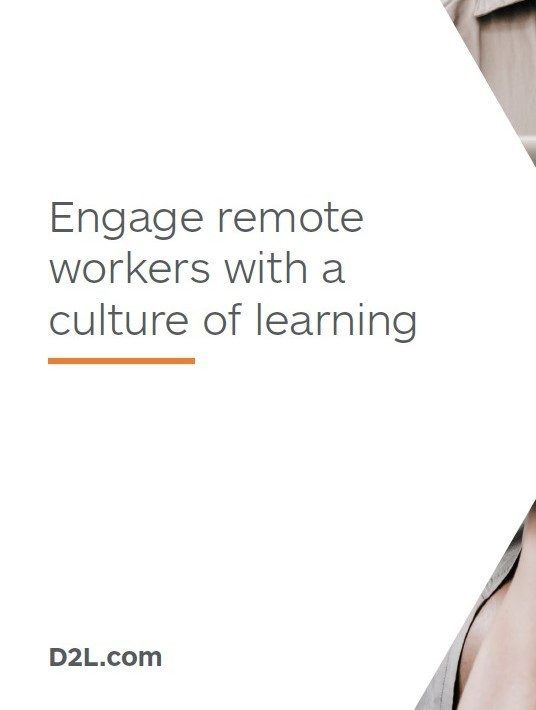Cultivate A Vibrant Culture Of Learning With Your Telecommuting Teams
It might be tempting to use the challenges of working remotely as an excuse to not embrace this evolution in the way we work, particularly after the pandemic has ended. Instead, they should highlight for us how critical it is to build a strong learning culture that encourages behaviors that alleviate and eliminate them: open communication, intentional culture development, and accessible learning opportunities.
With a clear vision of the challenges to overcome, the following strategies can help you build or maintain your culture of learning with remote workers:

Involve Every Level Of Your Organization To Create A Vibrant Culture Of Learning
A culture of learning cannot be a top-down executive initiative, nor can it be remote-only. Relying solely on either one of these will lead you out of alignment. To build a vibrant culture of learning that serves your long-term goals, you must involve your whole organization (as many levels and locations as you can). Here are a few suggestions to make learning more accessible in your organization:
- Make sure all learning opportunities are replicated at an equivalent quality. Fight the two-tier experience that can occur for those who are in an office location versus those who are remote.
- Avoid a headquarters-heavy perspective when making decisions. Involve remote and regional employees in your planning to increase how relevant, accessible, and engaging the final result may be.
- Call on your leaders to set the example. Ask managers and culture-of-learning champions to continue sharing insights from their own professional development, promoting learning opportunities, and removing barriers so employees can participate in learning.
Set Expectations Around Work And Learning
Organizations new to managing a remote workforce probably won’t be surprised that the remote employee experience will be different, but they may not expect how it will change—sometimes significantly. For example, people who work from home can have trouble setting limits on their workday and learning goals, which can lead to burnout and disengagement over time. They can also have trouble prioritizing learning and development because they don’t have the cultural reinforcement from their teammates.
Make Your LMS The Center Of Your Community
The reality is that if you have even a single remote worker, your company culture and learning culture need to be remote too. And the only way to ensure you’re delivering an experience that meets the needs of on-site and off-site employees is to build your vibrant culture of learning in a central, cloud-based learning management system (LMS).
Ultimately, your LMS needs to be a central hub for your organization, providing on-site and off-site employees alike with equal access to social engagement, learning opportunities, and cultural development. Remember—enabling and training employees to visit and engage with your LMS as a community touchpoint requires strategy and planning. Here are a few suggestions to help turn
your LMS into a focal point of engagement:
- Set a reminder to regularly update your LMS newsfeed or announcement page with new content.
- Create an engagement calendar of community-building questions and updates you can feature weekly or monthly.
- Decide in advance what content will be exclusive to your LMS and what content will be distributed via email or other communication platforms.
- Schedule regular companywide discussion forums with access to executives or members of the leadership team.
- Connect other business tools to your LMS, such as your email, calendar, and communication tools for messaging and videoconferencing so that employees can access everything they need in one place.
- Reward employees who participate in LMS community activity with praise or prizes.
Conclusion
Remote work, in full or in part, has become a reality for most organizations today. Organizations need to be ready to adapt to meet the evolving needs and expectations of current and future employees. A cornerstone of this is making sure people have access to the kinds of training and development that will improve their skills and advance their careers.
This is where a strategically deployed LMS comes in. By taking steps to move learning into the cloud, involve every level of your organization, set expectations around work and learning, and build a bustling community hub, you can ensure all your employees—especially the remote ones—have access to the opportunities they need to grow and thrive in their careers.
Download the eBook Engage Virtual Workers With A Culture Of Learning to discover how to prepare for the remote work challenges ahead.









